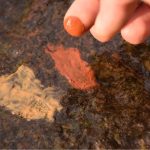Red Osier Dogwood is a great wood for primitive crafts, and it’s easy to identify. This shrub/tree grows to about thirty feet tall, and it’s characterized by its white berries and red stems with a reddish hue to the bark itself. The leaves are lance shaped and grow in an opposite pattern along the stem. They are also smooth, with no teeth or lobes along its margins. Red Osier Dogwood is related to the flowering dogwood, which is well known in the herbal community for its medicinal benefits, but this plant has none that I’m aware of.
Red Osier Dogwood is a common inhabitant of clearings and prairie style environments. It can often be found growing in the same area as wild rose, goldenrod, yarrow, and even queen anne’s lace. It’s a hardy plant that can survive in a variety of conditions, from full sun to partial shade. It’s also tolerant of a wide range of soils, from sandy to clay.
Red Osier Dogwood is a great choice for primitive crafts due to its durability and strength. It can be used for everything from making furniture to creating tools and weapons. It’s also an excellent choice for making baskets and other containers. The wood is easy to work with and can be carved or shaped into whatever you need.
Red Osier Dogwood is a great choice for primitive crafts due to its durability and strength. It’s easy to identify and can be found in clearings and prairie style environments. It can be used for everything from making furniture to creating tools and weapons, and it’s also an excellent choice for making baskets and other containers. With its white berries and red stems, Red Osier Dogwood is a hardy plant that can survive in a variety of conditions, making it a great choice for primitive crafts.



GIPHY App Key not set. Please check settings